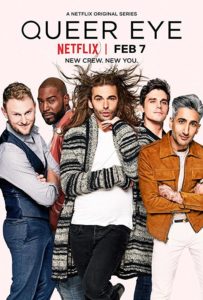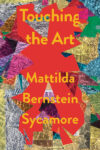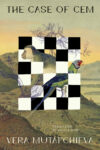 He can dance the merengue. He’s got the scoop on the new gallery. He’s clean, upright, handsome, worldly; cooks risotto and speaks French; knows his wines and his Warhol; splurges on brunch; runs marathons. He earns way too much money at his job as a personal trainer or an interior designer. He’s a well-heeled, smart-coiffed, gym-toned urban professional, usually donning some kind of tuxedo. Let’s call him the Neil Patrick Harris Gay—or, more simply, the Rich Gay.
He can dance the merengue. He’s got the scoop on the new gallery. He’s clean, upright, handsome, worldly; cooks risotto and speaks French; knows his wines and his Warhol; splurges on brunch; runs marathons. He earns way too much money at his job as a personal trainer or an interior designer. He’s a well-heeled, smart-coiffed, gym-toned urban professional, usually donning some kind of tuxedo. Let’s call him the Neil Patrick Harris Gay—or, more simply, the Rich Gay.
The trope of the Rich Gay is not a new one: there’s a direct line connecting the sexual deviants of the 19th-century aristocracy to Pocahontas’ effete Ratcliffe to the Modern Family gays of today. Of course, gay people aren’t actually richer than straight people. In fact, LGBT people are actually more likely to require food assistance and live below the poverty line. According to some estimates, 40 percent of homeless youth are LGBT. So where does the image of the Rich Gay come from? What constitutes the trope? Who’s promoting the stereotype—and, most importantly, who’s benefitting?
For some answers, we need go no further than Netflix. The 2018 Queer Eye reboot follows five gay men as they make over the lives of the terminally heterosexual. While the original 2000s series took place in NYC, this reboot finds the gays deep in Dixie, road-tripping into some of the skunkiest backwaters of Georgia. This is terra incognita, a land of Bible Study, NASCAR, and a severe shortage of final “g”s. Over the course of a week, the Fab Five bestow their emotional, domestic, sartorial, and culinary savoir faire unto their subject, all to make his life more comfortable, more tasteful, more livable. This is the charity of taste, where gay people share their homosexual worldliness with hets who can’t tell a sconce from a scone.
But this exchange—which Queer Eye presents as an issue of gendered taste—clearly tracks something beyond sexuality: wealth. In episode five, for example, the Fab Five comes to the aid of a working-class man named Bobby. They clear out his family’s clutter, give him new clothes and a haircut, set up a garden in the backyard, and generally make his home homier. But if we take a step back, we can see that the issue with this family is not that they hoard sippy cups. The issue is that the father is forced to work multiple jobs on an enhanced interrogation level of sleep just to keep himself, his wife, and his six kids alive. Same deal with Jeremy, the subject of episode eight, whose cringe-worthy outfits may not be wholly attributable to husbandly bumbling: “When I do have money for fashion,” he says, it goes towards his wife’s and daughters’ wardrobes, never his own. And in episode one, when the Fab Five comment on Tom’s filthy armchair, they don’t discuss whether new furniture is the best investment for a man surviving on a trucker’s salary. According to the logic of the show, these men live ugly lives because they are straight—not because those lives are what they can afford.
In some cases, it may well be true that masculinity is more at play than wealth. This is the case for episode four’s AJ, who seems to earn enough to afford the sleek life the Fab Five offer. However, AJ—the one gay subject of the show—is concerned about looking “too gay.” He asks the Fab Five to tone down their fashion and décor choices so he can still be read as masculine. Here, AJ’s masculinity demands understatement, if not slovenliness. Too neat an appearance risks confirming the feminine stereotype his sexuality entails. For Neal, the digital entrepreneur from episode two, it’s not his income that prevents him from living comfortably, but rather a lack of self-confidence tied up with pressures from his family to perform a role of husband and provider. It’s true that there’s a whole network of things going on in Queer Eye that keeps these men’s lives grimy. But what distinguishes the treatment of wealth from the treatment of masculinity—and those other factors—is that these latter topics are discussed, unpacked, and understood. As one critic puts it, while “race, religion and sexuality are tackled in the new Queer Eye, class is never addressed.” We should be wary of this silence.
Though the show never addresses it outright, class difference nevertheless remains the locus of most of the conflict of the show, as the subjects’ very culture is subjected to the shredder of moneyed gay taste. Going on dates to Walmart or drinking leftover pickle juice are not presented as thrifty (if bleak) responses to a difficult economic reality, but rather the strange habits of hayseeds too long deprived of the purifying influence of polite society. Working-class hobbies and social activities, from Formula 1 to antique car shows, are approached with tolerance or, at best, an anthropological interest. This show is not about gay men swooping in to save straight men from the stultifying effects of straightness. It’s about rich men trying to make working- and middle-class families look less embarrassingly working- and middle-class. It’s not a love for transformation that fuels these episodes, but a desire to see working-class culture corrected.
Yes, corrected. While the show presents its purpose as conciliatory (“My goal is to figure out how we’re similar as opposed to how different we are,” Antoni says in the opening sequence), the very structure turns it into a spectacle of inter-class conflict. This is clear from the start: the first shot we get of the Fab Five shows them sleek as always, laughing as they cross a city street, while the first shot of Georgia takes us to a wooded country road, where, instead of handsome gay men crossing the street, it’s a skunk carrying a baby skunk in its mouth. And, while I don’t doubt that the Fab Five truly care about their subjects, their individualized approach to improvement sidesteps the structural issues (particularly unemployment and dwindling social services) that are actually making these people’s lives difficult. Finally, the show closes out any opportunity for lasting dialogue simply through its episodic nature. In the course of a week the gays come, they coiffe, they sashay back to the city with the satisfaction of having helped people, when all they’ve really done is to make strangers resemble themselves for a day.
To simply say their makeovers are superficial doesn’t adequately cover the corrective tone the show takes toward working-class culture, much less ask the viewer why they would want to see working-class culture corrected in the first place. Mistrust is an essential part of it, especially as class and region are reified as political determinants. But more importantly, the show reaffirms the idea that working-class people want to change; that, if we all had out druthers, everyone would be living the same upper-middle, urban/suburban, consumption-driven lifestyles the members of the Fab Five represent. However, for us to acknowledge that the economic landscape makes such aspirations impossible would be to admit our own complicity in income inequality. It is more pleasing to disguise this inter-class conflict as one of taste, since it absolves us of our desire to see working-class culture erased, while, at the same time, erasing working-class culture.
Why, then, would these working-class straight men allow their economic issues to be re-packaged as simple failures of gendered taste? Perhaps because it helps them save face, transforming poverty from an emasculating force into the very grist of manhood. When these men describe themselves as “simple,” it is in opposition to all those who are fussy. Wives and daughters are the only ones to get new clothes not because the budget’s tight, but because there’s something queer about a man shopping for himself. Similarly, when buying phthalate-free grooming products, the issue is not the cost, but the specialized, feminized knowledge of what the word “phthalate” means. The more the leisured, flamboyant Fab Five come to embody the enigmatic and the feminine, the better straight men can embrace their poverty in the name of masculinity. A comfortable life is not beyond their tax bracket; it’s just incompatible with their manhood.
It’s clear that working-class straight people benefit from the image of the Rich Gay. That is not the issue. The issue arises when the association between wealth and homosexuality comes to structure every aspect of the straight imagination, regardless of economic status, from the division of labor in couples to attitudes toward sexual orientation. To get the full picture, we have to step away from Queer Eye and ask how the Rich Gay defines the straight world at large—and why.
In modern American history, men, regardless of background, have tended to dismiss even the most basic tasks of survival (laundry, cooking, child care) as “women’s work.” If a man does end up doing this kind of labor, it’s at the risk of becoming, as Trump says, “like the wife” in a relationship. (Note that the men who help around the house can never become the wife, but only like the wife—a performance that never quite achieves the natural, a perversion of masculine and feminine elements that, in its final form, yields the gay man.) Not only does this ignorance of survival skills continue to be an epidemic among straight men of all backgrounds, but it’s sold as a positive thing, the calling card of the endearingly hapless bachelor.
How can those straight men who are spared having to work multiple jobs get away with never changing a diaper in their lives? By citing the specter of the Rich Gay. Having gay men serve as the designers, hairdressers, therapists, and personal trainers to introduce straight men to grooming, emotional sensitivity, and cultural literacy actually renders these skills alien. Straight men cannot be expected to decipher such arcane shibboleths as “make a quesadilla” or “talk to your wife” so long as any steps toward self-improvement are relegated to the double shadow-realm of leisured wealth and homosexuality. Since the trope of the Rich Gay equates basic human consideration with an aristocratic gay sensibility, straight men can shirk the expectation to cook, or surprise their partner, or maintain a livable space. The expertise of the Rich Gay permits straight men to bumble comfortably.
In addition to structuring how labor is divided in straight relationships, the Rich Gay validates the core dynamic of straight relationships by reaffirming negative stereotypes of gay men. In his dissenting opinion for the 1996 anti-discrimination Supreme Court case Romer v. Evans, Justice Antonin Scalia harps on the “concentration” of gay men in “certain communities”—no doubt implying that gay men’s wealth allows them to recede into a coastal, urban, elite bastion of their own taste and sensibility. Not only does this lend a sinister edge to our image of gay communities, but it also works to quarantine gay men to the fringes of the rural and suburban imagination, making queerness a geographical impossibility for anyone in the heartland or the South. Gay men’s spectral wealth keeps them at a comfortable arm’s length from the symbolically pure center of America, trapping them, impotent, in a bottle of Jean-Paul Gautier’s fragrance, Le Mâle.
By showing how the Rich Gay trope relegates diverse sexualities to the fringes of society, I do not mean to imply that straight people can then ignore queer men. They do not. In fact, they can never ignore the Rich Gay so long as his existence helps structure the heterosexual family unit itself. In the “Live Laugh Love” era, when the question of what’s truly important is reduced to K-Mart wall stencils, it may be easier to define a worthwhile life using negative examples. Enter the Rich Gay. It’s no coincidence that, obsessed as he is by surfaces and sensations, he’s an aficionado of everything that does not matter in life: expensive clothes, physical beauty, and accolades—all that can never be schlepped into the hereafter. He is the shorthand for a wasted existence, a grab-bag of vanity, lust, greed, envy, and—depending on who loses Drag Race—wrath.
It’s no coincidence, either, that Rich Gay is childless. He can keep a stylish apartment; he can bounce a quarter off his ass; he can cook a bœuf bourguignon that would make even Ferdinand drool. These are the trappings of an exciting life, and straight people keep us gays around precisely because we’re so good at doing them. Hell, straight couples would do these things themselves (straight people say) if they didn’t have to save up for Junior’s college and didn’t have Junior II playing Hot Wheels on the kitchen table. But the more accolades and skills straight people give the Rich Gay, the less his life is worth. These are white elephants, the repository of things that don’t matter. Straight culture foists the image of idle wealth on LGBT people to justify straight people’s own rug-ratted lives. By trivializing gay men’s preoccupation with the things you “can’t take with you,” straight couples elevate having children to a moral accomplishment.
Finally, at the most fundamental level, the Rich Gay stereotype helps justify straight people’s mistrust of gay men. His passion for Broadway, patronage of incomprehensible art, and an undying love for his pets all conspire to exaggerate the qualities of gay men mainstream society already hated: prissiness, femininity, and, eventually, insanity. The very moneyed uselessness of the Rich Gay’s taste (especially if it verges into ritzy territories of art or opera) becomes a diagnosis, evidence of the essential illegibility of gay identity. This is not stereotyping for stereotyping’s sake. The dehumanization of queer men re-centers heterosexuality as the only natural option.
Taken as a whole, the association between sexuality and wealth is a versatile one, benefitting working-class straight people as well as validating the naturalness of straight relationships. The Rich Gay is a complex matrix of stereotypes, associations, half-facts and soundbites; any attempt to discuss the economic realities of LGBT people gets sucked into his orbit. Through the glamorous haze of whitened teeth and grocery-delivery services, we begin to understand how—fabulous as he may be—the Rich Gay is a symbol of, and so a tool for, violence.
Drew Kiser is a writer based in Virginia. His reviews and fiction have appeared in Make Magazine, Spider Mirror, Many Gendered Mothers, and Maudlin House. He can be reached on Twitter @drewkiser666.
This post may contain affiliate links.







